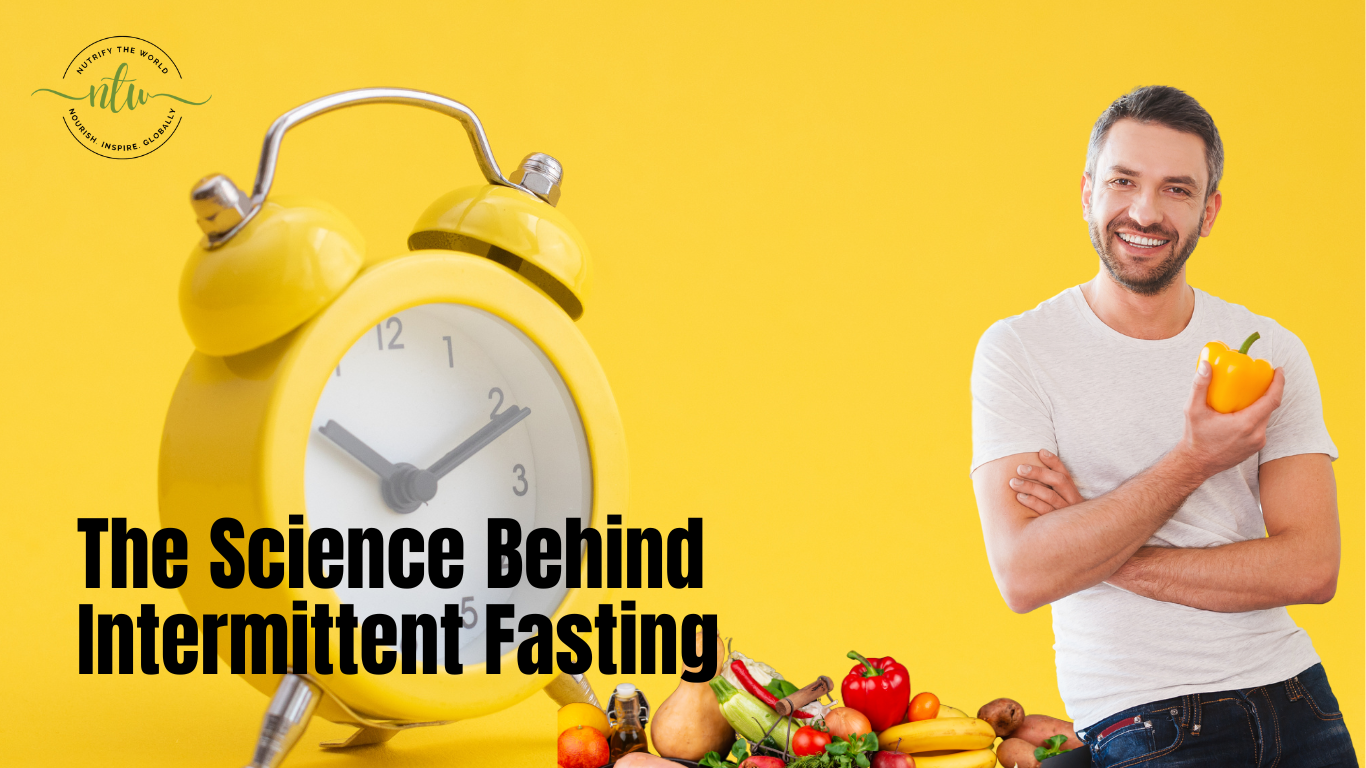The Science Behind Intermittent Fasting
Intermittent fasting is a powerful tool for weight loss, metabolic health, and overall well-being. Its simplicity and flexibility make it accessible to many, but success lies in consistency and personalization. Understanding the science behind fasting can empower you to make informed decisions about incorporating it into your lifestyle.


The Science Behind Intermittent Fasting
Intermittent fasting (IF) has garnered significant attention in recent years for its promising benefits in weight loss, metabolism, and overall health. Rooted in historical and cultural practices, fasting is not just a trend but a scientifically-backed approach to improving well-being. This article delves into the science behind intermittent fasting, its types, benefits, myths versus facts, considerations for women, and practical tips for beginners.
What Is Intermittent Fasting?
Intermittent fasting is an eating pattern that cycles between periods of eating and fasting. Unlike traditional diets that focus on "what" to eat, IF emphasizes "when" to eat. By giving your body a break from constant digestion, IF triggers numerous physiological changes that can promote health and longevity.
Types of Intermittent Fasting
There are several popular methods of intermittent fasting, each catering to different lifestyles and goals:
16/8 Method (Time-Restricted Feeding): Popularized by Dr. Satchin Panda, a researcher in circadian rhythms and fasting.
Fast for 16 hours and eat during an 8-hour window.
Commonly used by beginners due to its flexibility.
5:2 Method: Based on the approach outlined by Dr. Michael Mosley in "The Fast Diet."
Eat normally for five days a week and consume only 500-600 calories on the other two non-consecutive days.
Eat-Stop-Eat: Inspired by Brad Pilon’s book Eat Stop Eat.
Involves a full 24-hour fast once or twice a week.
Alternate-Day Fasting: Research extensively by Dr. Krista Varady and highlighted in The Every-Other-Day Diet.
Fast every other day, consuming very few calories or none on fasting days.
Warrior Diet: Developed by Ori Hofmekler, introduced in The Warrior Diet.
Fast for 20 hours and consume a large meal within a 4-hour window in the evening.
OMAD (One Meal a Day): A concept popularized by various fasting enthusiasts and practitioners, often discussed in online fasting communities and forums.
A more extreme form where you eat only one meal per day.
The Science-Backed Benefits of Intermittent Fasting
1. Weight Loss and Fat Burning
Caloric Deficit: By reducing the eating window, IF often leads to fewer calories consumed.
Hormonal Changes: Fasting lowers insulin levels, facilitating fat burning. Increased levels of norepinephrine (noradrenaline) boost metabolism.
Fat Adaptation: During fasting, the body switches from burning glucose to burning fat as its primary fuel source.
2. Improved Metabolic Health
Insulin Sensitivity: Regular fasting can improve insulin sensitivity, reducing the risk of Type 2 diabetes.
Cholesterol Levels: Studies indicate improvements in LDL cholesterol, triglycerides, and overall cardiovascular health.
3. Cellular Repair and Longevity
Autophagy: Fasting triggers autophagy, a process where cells clean out damaged components, potentially reducing the risk of chronic diseases and promoting longevity.
Reduced Inflammation: Fasting lowers markers of inflammation, which is linked to numerous health conditions.
4. Brain Health
Increased BDNF: Fasting stimulates brain-derived neurotrophic factor, which supports the growth of new neurons and protects against neurodegenerative diseases.
Cognitive Function: Many report improved focus and mental clarity during fasting.
Myths vs. Facts About Intermittent Fasting
Myth 1: Fasting slows down metabolism.
Fact: Short-term fasting boosts metabolism by 3.6-14%, though prolonged fasting (72+ hours) may have the opposite effect.
Myth 2: Fasting leads to muscle loss.
Fact: Research shows that IF preserves lean muscle mass better than traditional calorie restriction diets.
Myth 3: You can eat anything during your eating window.
Fact: While there is flexibility, nutrient-dense foods optimize results and overall health.
Myth 4: Fasting is the same for everyone.
Fact: Individual responses vary based on factors like age, gender, and activity level.
Fasting for Women: Special Considerations
Women’s bodies are particularly sensitive to changes in calorie intake due to hormonal fluctuations. Here’s what women should keep in mind:
Start Slowly: Begin with a shorter fasting window (e.g., 12-14 hours) to assess how your body reacts.
Monitor Menstrual Health: Overly restrictive fasting can impact menstrual cycles. Listen to your body and adjust as needed.
Focus on Nutrition: Ensure your eating window includes nutrient-rich foods to support hormonal balance.
Pregnancy and Breastfeeding: Avoid fasting during these periods unless supervised by a healthcare provider.
Practical Tips for Beginners
Choose the Right Method: Start with a manageable fasting schedule like the 16/8 method.
Stay Hydrated: Drink plenty of water, herbal teas, or black coffee to curb hunger and stay energized.
Gradual Adaptation: Allow your body to adjust by gradually increasing fasting hours.
Plan Balanced Meals: Focus on high-quality proteins, healthy fats, and complex carbohydrates during your eating window.
Avoid Overeating: Eating excessively during your window can negate the benefits of fasting.
Listen to Your Body: Adjust your approach if you feel fatigued, lightheaded, or overly stressed.
Combine with Exercise: Pair IF with strength training or low-intensity workouts for better results.
Is Intermittent Fasting Right for You?
While IF has numerous benefits, it’s not a one-size-fits-all solution. Individuals with certain medical conditions, pregnant women, or those with a history of eating disorders should consult a healthcare provider before starting.
Final Thoughts
Intermittent fasting is a powerful tool for weight loss, metabolic health, and overall well-being. Its simplicity and flexibility make it accessible to many, but success lies in consistency and personalization. Understanding the science behind fasting can empower you to make informed decisions about incorporating it into your lifestyle.
If you’re ready to unlock the full potential of intermittent fasting, I invite you to join my holistic health coaching program. Together, we can create personalized fasting plans tailored to your needs, ensuring sustainable and transformative results.
Nimmisha Jyoti | Certified Nutritionist | Certified Integrated Medicine Practitioner | Health Coach
Take the first step toward a healthier you. Contact us today for a FREE Zero Session. WatsApp on +91 7217619967
Disclaimer:
The information provided on NutrifyTheWorld blog is for educational and informational purposes only. It is not intended as a substitute for professional medical advice, diagnosis, or treatment. Always seek the advice of your physician or other qualified health provider with any questions you may have regarding a medical condition. Never disregard professional medical advice or delay in seeking it because of something you have read on NutrifyTheWorld blog. The opinions expressed by the experts in this article are their own and do not necessarily reflect the views of NutrifyTheWorld or its affiliates. Product recommendations are based on research and personal experiences, but individual results may vary. Before using any product mentioned on NutrifyTheWorld blog, please read the label and consult with a healthcare professional to ensure it is suitable for your specific needs and conditions. We do not endorse or promote any specific brand or product mentioned on NutrifyTheWorld blog. Any reliance you place on the information provided is at your own risk. NutrifyTheWorld shall not be liable for any loss or damage arising from the use of information on its blog.


